Written By: Marvin S. Henry, Maryland State Police (Ret.)
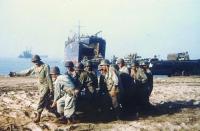
In background, US Army Engineers hauled a roll of wire mesh into position to make a beach roadway, Salerno, Italy, Sep 1943.
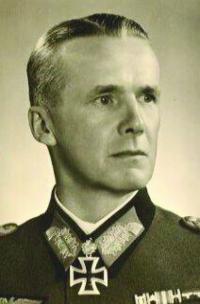
Traugott Herr, Commander LXXVI Panzerkorps, wearing Knight's Cross with Oak Leaves.
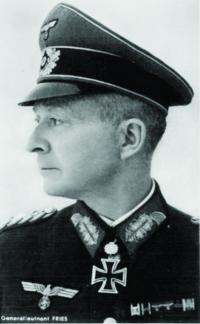
General der Panzertruppe Walter Fries, Commander 29th Panzer-Grenadier Division, wearing Knight's Cross with Oak Leaves.
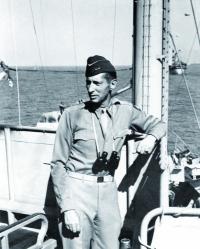
5th Army Commander Clark on board USS Ancon during the landings at Salerno, Italy, 12 September 1943.
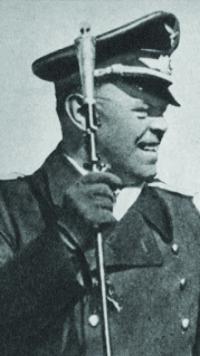
Field Marshal Albert Kesselring

Hermann Balck, Commander XIV Panzerkorps, wearing Knight's Cross with Oak Leaves.
Immediately on the heels of the Sicily Invasion, on September 9, 1943, Lt. General Mark ClarkÙs U.S. 5th Army, a part of General Sir Harold Alexander's 15th Army Group, landed on the mainland Italy in the area of Salerno on Italy's Western Coast.
There was an abundance of "Military Politics" being played as to the planning of this particular invasion. British Prime Minister Winston Churchill wanted this invasion, as he referred to Italy as the "soft underbelly" of the Axis. General Clark referred to it as a "Tough Gut." The British believed that Italy was in disarray and wanted out of the war. If the Allies invaded, they would tie up thousands of German troops that could otherwise be used on the Eastern Front. Stalin wanted a "Second Front" that would weaken the Wehrmacht's invasion of Russia.
General George C. Marshall and the American staff didn't want to begin any operations that would delay the invasion of Fortress Europe. When it became clear, in 1943, that Operation Overlord (Normandy Invasion) could not be prepared and executed, the Allies agreed to the Sicily Invasion followed by the Salerno Invasion.
The main focus of the invasion was to capture the Port of Naples to insure resupply and cut across the East coast of Italy to trap Axis Troops further to the South.
The Invasion started without Naval or Aerial Bombardment.
For three days Allied and Axis Forces battled for supremacy, with the Germans trying to mask their buildup for a Counter-Offensive. General Clark realized the invasion forces were slow to get resupplied and reinforced and so took a defensive posture after moving only seven to eight miles inland from the beach. On September 12 the British X Corps had set up defenses and by mid-afternoon the 29th Panzergrenadier Division counterattacked the Army's 1st Battalion 142nd Infantry and overran them. On September 14, the Germans launched their counteroffensive. Due to lack of reinforcements, and the German advance, every available Allied aircraft was ordered to assist the Army's 5th Division. More than 1000 tons of bombs were dropped that day and German armor was devastated.
Late on the 14th, the two British Battleships, HMS Warspite and her sister ship, HMS Valient, arrived greatly boosting morale. Land, sea, and aerial bombardment began to take effect. German Field Marshal Albert Kesselring, Commander-in-Chief of AxisÙ defenses in Italy, reported that Allied superiority had forced the LXXVI Panzerkorps on the defensive and a decisive success would entirely depend on a current attack by the XIV Panzerkorps. If this failed, 10th Army must break off its offensive or be destroyed.
On September 16, 10th Army, under direction of General Heinrich von Vietinghoff, advised Field Marshal Kesselring that Allied Air and Naval supremacy could not be neutralized and further battle would be futile, especially with British Eighth Army approaching. Kesselring agreed and offensive German operations ceased on the 17th.
With the withdrawal of the Axis Forces, the Allied march across Italy began. Hitler ordered Field Marshal Kesselring to hold Rome as long as possible, as it was feared the Allies would eventually get to the oil reserves in the Balkans.
By this time the Allies had total control of Southern Italy and it was only a matter of time before all of Italy would be in Allied hands. Hitler, for once, agreed with his generals, who fought delaying actions in order to give his forces time to set up defensive lines in Northern Italy. Despite the problems incurred by the Allied landings at Salerno and Sicily, valuable information and lessons were learned in the planning and implementation of these two invasions. The lessons would prove to be priceless on June 6, 1944, and the lives lost would not be in vain.
AuthorÙs Note: My thanks to Pete Wimbrow for allowing me the opportunity to feature my father in my article on the Sicily Invasion. Although he never spoke much about the war, he participated in the following invasions: North Africa, Sicily, Salerno, Normandy and Okinawa, not to mention his participation in covert operations as a member of the UDT. Having come from a family of warriors who participated in World War II, Korea, Viet Nam, and Desert Storm, writing these articles has given me an entirely new perspective on the men and women who fought them, not to mention the history learned in the building and safe guarding of our freedoms. I would encourage all who read this to follow the Coconut TimesÙ features on "Remembering World War II."
NEXT WEEK: CEPHALONIA
«Go back to the previous page.





